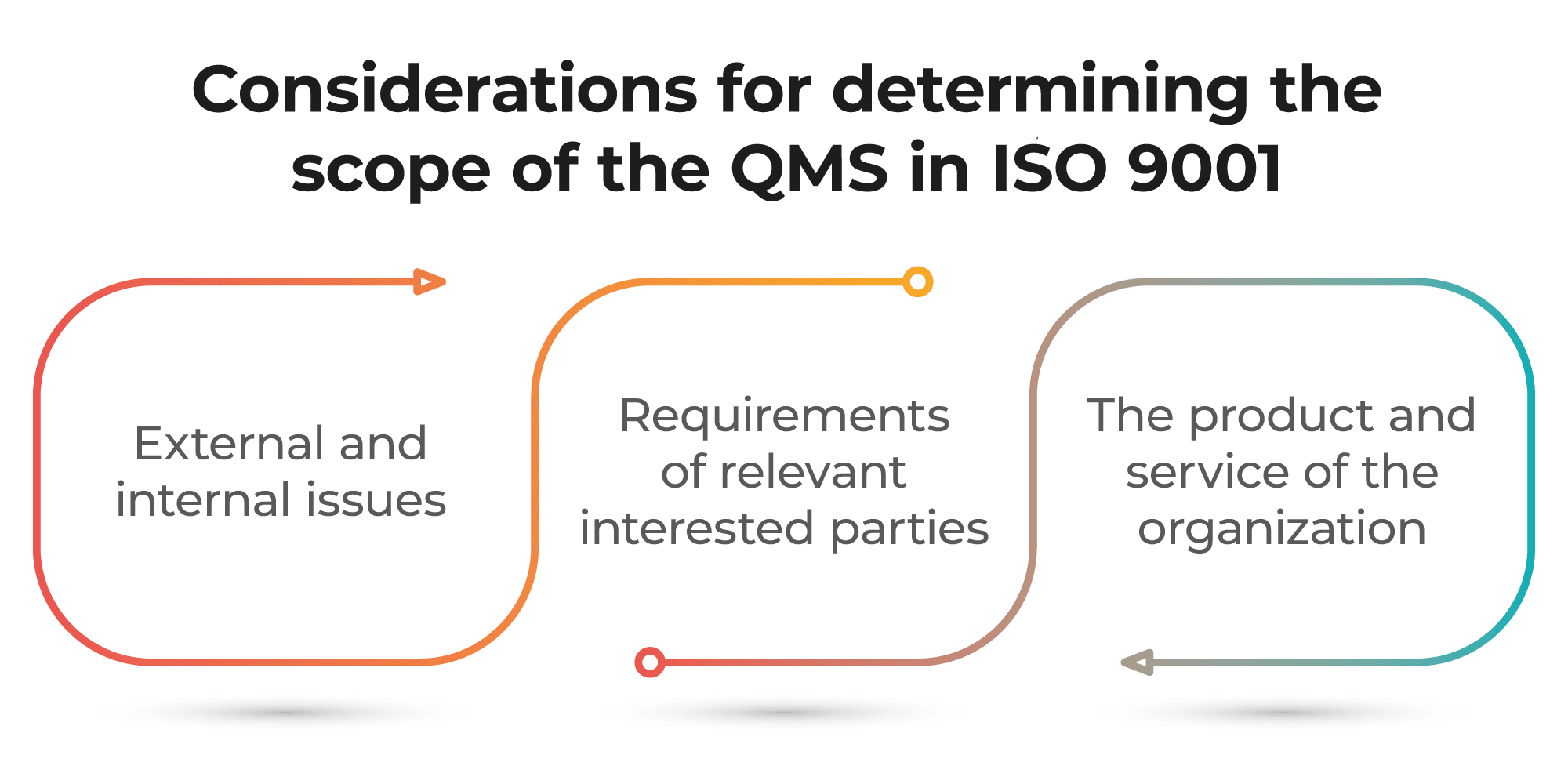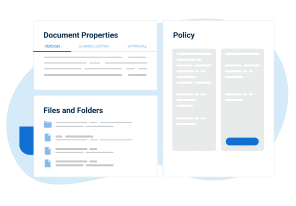Determining the scope of the Quality Management System (QMS) has been a part of the ISO 9001 requirements for a long time. This scope is a vital part of the quality manual, as it defines how far the QMS extends within the company’s operations, and details any exclusion from the ISO 9001 requirements and the justification for these. It is through the scope that you define what your Quality Management System covers within your organization.
With the release of the new update to the ISO 9001 requirements, ISO 9001:2015, there is some additional clarification on defining the scope of the QMS. These clarifications will help to standardize how companies define the scope of their QMS, even if they choose not to have a quality manual, which is no longer a stated requirement in the standard.
- External and internal issues that are relevant to the purpose of the organization, the strategic direction, and the ability to achieve intended results
- Requirements of relevant interested parties
- The product and service of the organization
What does the ISO 9001:2015 standard state?
Section 4.3 of the standard details the requirements for determining the scope of the Quality Management System. In a note about the QMS, it is stated that the QMS can include the whole organization, specifically identified functions of the organization, specifically identified sections of the organization, or one or more functions across a group of organizations. To start, there are three considerations to be included when determining the scope:
- External and internal issues that are relevant to the purpose of the organization, the strategic direction, and the ability to achieve intended results
- Requirements of relevant interested parties
- The product and service of the organization
In addition, the scope is to include any requirements of the ISO 9001 standard that can be applied, and if a requirement is determined to not apply, the organization will not use this as a reason for not ensuring conformity of product and service. The scope is to state the products and services covered by the QMS, and justification for any instances where the ISO 9001 standard cannot be applied.
How does this apply to my organization?
It is most common that the scope of the QMS covers the entire organization. Some noted exceptions are when your QMS only covers one physical location of a multi-location company, or when your manufacturing or service is distinctly split between industries (e.g., in a plant with three assembly lines where assembly lines 1 and 2 are for automotive and need to have a QMS certified to the ISO/TS 16494 QMS standard for automotive, but you want line 3 to be certified to ISO 9001 since many of the automotive requirements do not apply).
So, your scope should identify the physical locations of the QMS, products or services that are created within the QMS processes, and the industries that are applicable if this is relevant. It should be clear enough to identify what your business does, and if not all parts of the business are applicable, it should be easily identified which parts are. Some examples could be:
- XYZ Manufacturing located in London, England, producing machined components in the aerospace and automotive industry within Europe.
- XYZ Consultants located in offices in Europe, Asia, and North American provide Information Technology Support to companies in any industry.
- XYZ Computing provides software development services to companies in the automotive and heavy machinery industries within North and South America.
- XYZ Industries is a division of XYZ International that operates in Indonesia and provides paper products to the Asian market.
Make your scope statement clear and concise
Your scope does not have a size limit, and should include enough information to determine what is covered by the processes of the QMS. However, it is important to make it clear what is included and what is not. If it is not clear to you what processes in your company are covered by your QMS, then how will it be clear to an outside auditor or other interested party? Making your scope statement simple and easy to read can help to focus your QMS efforts and prevent unnecessary questions about activities that you may perform that may not be applicable to your QMS certification.
To comply with all ISO 9001 requirements, use this helpful ISO 9001 Premium Documentation Toolkit that provides all QMS documents.

 Mark Hammar
Mark Hammar 




